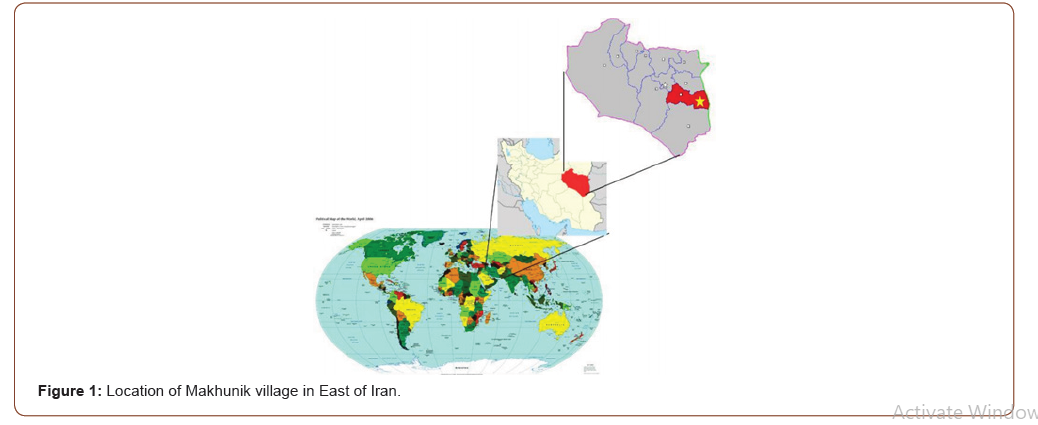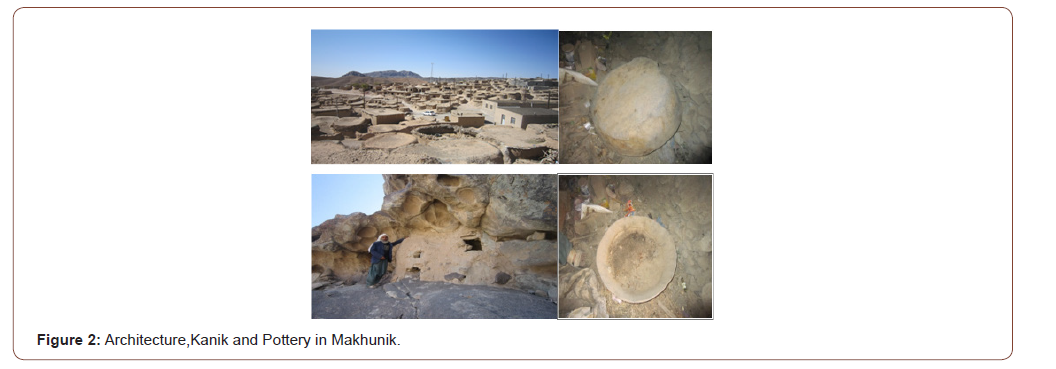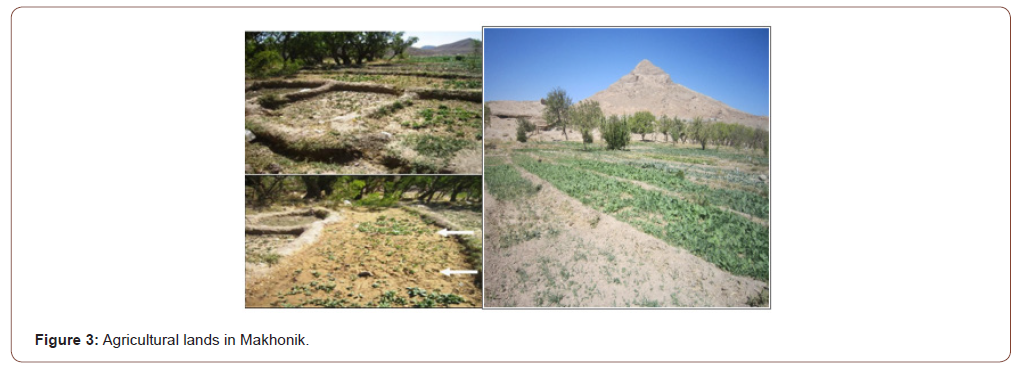 Mini Review
Mini Review
Live Pre-Historic from Limited Collection and Agriculture (Base on Ethnoarchaeology Of Makhunik Livelihood Economy)
Tahereh Rahimkhani, Independent Researcher, Birjand University, Iran
Received Date: May 28, 2020; Published Date: June 12, 2020
Abstract
Living economy is one of the most important parts of the life of early societies that is very important in the research of archaeologists .This research needs to high costs in laboratory studies and also the quality and mechanism of this economy is not very clear to us. Ethnoarchaeology studies is one of the most practical ways to study such topics. the village of Makhonik is a reliable study example for interpreting these issues because of a cultural context similar to prehistoric times (such as architecture, storage, and pottery). I studied in this article different sectors of the village’s livelihood economy by the method of ethno-archaeology in the cultural-historical context of Makhunik to interpret and understand more about livelihoods and food preparation in early societies.
Keywords: Ethnoarcheology; Iran; Makhunik village; Livelihood Economy, Early society
Natural and Cultural Landscape

Makhonik is one of the villages of South Khorasan province in eastern Iran (Figure 1).
The village is located in a mountainous and difficult place to access for this reason Makhunik has been limited to communicating with around communities.also access to natural resources such as fertile water and soil Barabadi and shoaybi [1]. The main feature of Makhunik is the different architecture traditional context RahimKhani [2] the architecture of the village is comparable to prehistoric sites and the most important architectural features are the small size of the structures and their components variety of plans and materials used in it. Rahimkhani, Sabori and Kanik [3] is a structure of natural holes in the granite rocks. these spaces are used for food storage and documents Rahimkhani and Sabori [4] in addition to the pottery used are similar to prehistoric specimens for their form and type (Figure 2).

Living Economy, Description and Analysis
The livelihood economy in Makhunik is limited by agriculture and animal husbandry and collection and recent years, workers and carpet weavers. The agricultural land is located in a place called Keshmoun and it is located in 1 km south of the village. However, not all agricultural land in MakhUnik is 5 hectares but the main job of the people is agriculture. farmers mostly grow garlic, turnips, beets, barley and alfalfa and also in trees such as jujube and apricot . these crops are planted in small farm with dimensions of 1.1 meters. the reason for this small size of the land is that the land is divided into good and bad (Ain and Dal) and frequent inheritance among the childrens and the lack of a culture of buying and selling or changing the land in Makhunik (Figure 3).

Agriculture in Makhonik does not belong to a particular gender and is done by men and women. furthermore in the recent past people’s food was only in two meals (breakfast and dinner) due to limited agricultural land and lack of communication with the city. currently, people’s main food is very light and it is Pokhtik . it is beet, turnips and cooked carrots .it is cut after cooking and then dried in the sun the advantage of this food Keeping it longhy (Figure 4).

Another food that is used in the dry season is Taghz or Saahshahe. It is a type of locus and from the Naz plain around Makhunik that people separate the beginning and the end of it and then cook it (Figure 5).

Now for breakfast use foods such as curd, goat’s milk and bread and lunch is for middle-aged and old people, light and low mostly Pokhtik and younger people eat the usual food of the city and they eat dinner after the evening lightly. Animal husbandry is limited in the village and they keep only 3 to 5 for each family. In addition to goats, sheep are kept very limited and for its meat while the currently, the number of cows in the village are less than 10. Livestock are kept in a public place in two kilometers east of the village and by a shepherd and one of the villagers in turn. another part of the village’s livelihood economy is the collection of plants .it is usually done by village women. these plants include thyme, chloroprene, mother booze, peppermint, etc. they are usually used medicinally or even for everyday drinking.
Conclusion
It seams geographical constraints have created a settlement Similar to prehistoric. this factor has made the village of Makhunik homogeneous with the cultural features of the prehistoric period Makhonik’s livelihood economy can be generalized with a livelihood economy in early societies. The livelihood economy in Makhunik is largely based on limited agriculture. Animal husbandry is also an important part of the village’s subsistence economy.in recent years, worker and carpet weaving have become new parts of the Makhunik livelihood economy and Collecting plant plants for medicinal purposes, etc.
Acknowledgement
None.
Conflict of Interest
No conflict of interest.
References
- Brabadi SA, Shoaibi GH (2005) Makhunik Anthropology. Tehran: Cultural Heritage and Tourism Organization. Archaeological Research Center.
- Rahimkhani T (2015) Ancient Architecture Makhunik. Master’s thesis in archeology. Birjand University, Iran.
- Rahimkhani T, Sabori H, Kanik (2019) A Dynamic Example for Explaining the Tradition of Storage and Stamp in Primary Societies: Based on Ethno-Archeological Studies in the Makhunik Village. journal of archaeology and anthropology.
- Rahimkhani T, Sabori H (2019) An Examination of the Architectural Relationship between the Settlement and Cemetery Sites through Ethnoarchaeological Study of MakhuniK. journal of Ethnoarchaeology.
-
Tahereh Rahimkhani. Live Pre-Historic from Limited Collection and Agriculture (Base on Ethnoarchaeology Of Makhunik Livelihood Economy). Open Access J Arch & Anthropol. 2(3): 2020. OAJAA.MS.ID.000538.
-
Cyber breaches, Human-Computer Interactions, Human-machine-human, Cyber-security
-

This work is licensed under a Creative Commons Attribution-NonCommercial 4.0 International License.






